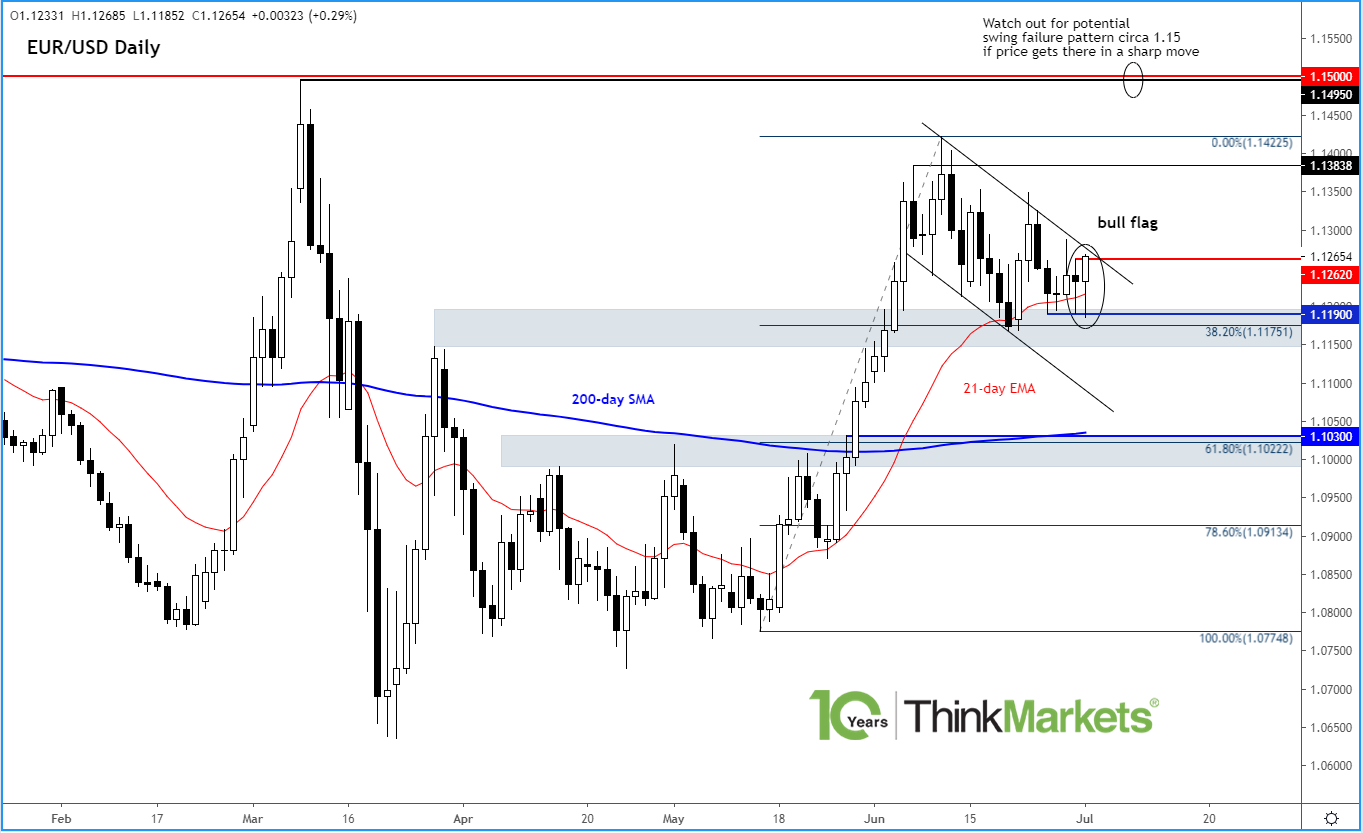It looks like investors are interpreting positive US data as being positive for risk, which, in turn, means less demand for haven dollar. Work that out! But that’s how the markets are behaving right now and there is no point fighting it or trying to prove it wrong by continually going against the trend.
Indeed, the dollar fell against most currencies despite news US ISM manufacturing came in at 52.6 vs. 49.5 expected and 43.1 last. Earlier, the ADP report showed a 2.37 million increase in private sector nonfarm payrolls compared with 2.9 million expected.
The dollar fell sharply against all major currencies, lifting the likes of the GBP/USD and EUR/USD pairs to fresh session highs. The euro has got an additional boost by news of better-than-expected Eurozone data released earlier this morning, although this did not provide an immediate boost for the single currency (see below for more).
EUR/USD bull flagging
From a technical point of view, the EUR/USD is currently displaying THIS lovely-looking bull flag pattern ahead of the US jobs report on Thursday:

Source: ThinkMarkets and TradingView.com
A breakout could pave the way for a run to prior highs circa 1.1420, or even 1.1500. But if price fails to break higher, or reverses quickly after a brief break out, then this could lead to some selling pressure towards the 200-day average and key support around 1.1000-1.1030 area:
Stronger Eurozone data point to economic recovery
Investors are meanwhile warming to the idea that the single currency bloc is starting to shake off the Covid-19 slowdown, with German numbers looking quite decent.
Although the German unemployment rate hit a five-year high of 6.2% as unemployment rose for the third straight month, the 69,000 increase in job losses were well below 120,000 expected and May’s 238,000 print. We also saw a big jump in retail sales, which provided more evidence of improving conditions at the Eurozone’s largest economy as German shoppers went on a post-lockdown spending splurge in May, driving sales up by a record 13.9% from the previous month. This was much better than 3.5% expected and more than made up for the 6.5% drop in April. The downturn in Eurozone’s factories also eased sharply in June, according to the purchasing managers’ indices. Spanish manufacturing PMI improved sharply to 49.0 from 38.3, beating expectations of 45.2. Eurozone, German and French PMIs were unexpectedly revised higher to 47.4, 45.2 and 52.3, respectively.